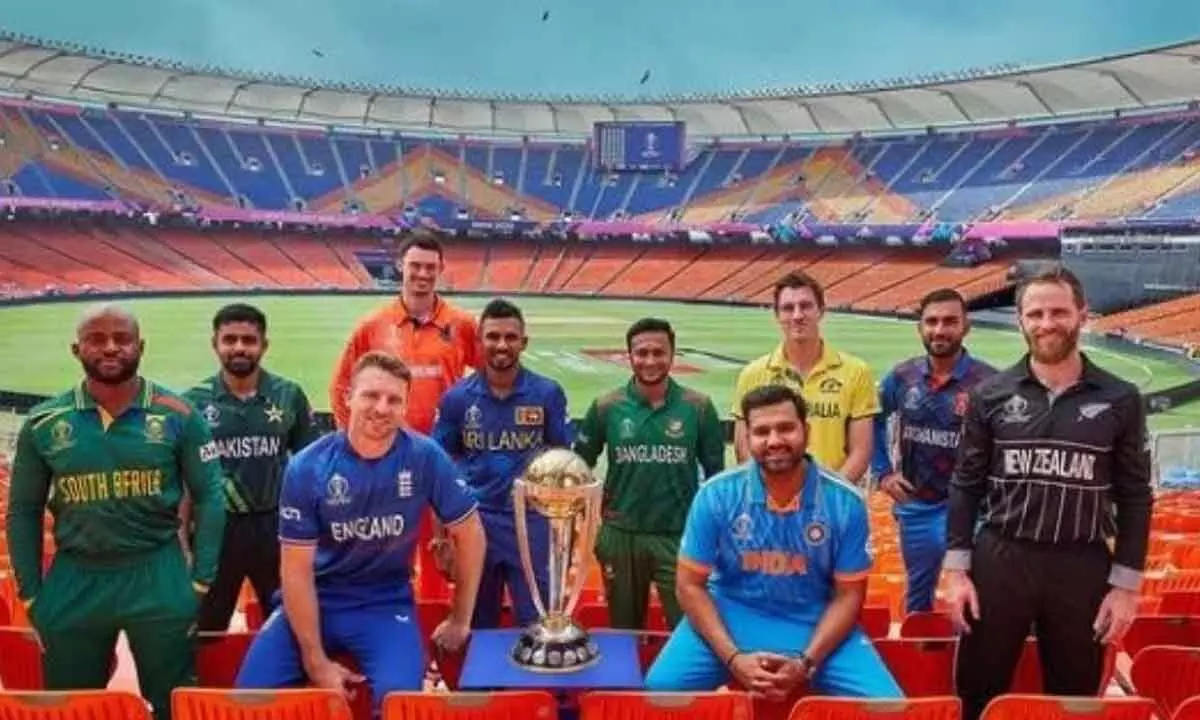ODI: Is it truly the One Dying Int’l format of the game?

As the month-long extravaganza of the most prestigious and celebrated cricket tournament came to an end, albeit on a somber note for Indian fans, it is time to reflect on the fate of ODI cricket. Arguably the greatest batsman to have ever played the game of cricket, Sachin Tendulkar, once expressed his reservations about the fate of ODI cricket. According to the God of Cricket, the ODI format is too formulaic and predictable. The idea resonated well with other cricketers, and many current and yesteryear players have echoed the same opinion regarding the 50-over format of cricket. Beyond the predictable nature of the format, present-day cricketers are concerned about the physical toll their bodies endure when playing in all three formats—Tests, ODIs, and T20s.Sports presenter Gaurav Kapur, on one of the popular sports podcasts just before the ODI World Cup, expressed that the current edition is likely one of the last few ODI World Cups. A similar sentiment about the future of ODI cricket seems to be gaining traction among cricket enthusiasts and experts alike. Test cricket indeed serves as the ultimate test of a cricketer’s technique and resilience, while the T20 format often proves to be the lucrative domain where financial gains take centre stage. ODI as format offers a bit of both but none in plenty. But before jumping to any conclusion, it’s crucial to delve into the reasons and carefully assess whether the factors leading to the speculation about the extinction of ODI cricket are indeed potent enough to make it vanish entirely.
The increasing burden of cricket load
The majority of present-day international players who assert that ODI is a dying format cite the burden of cricket load as one of the major reasons. The sentiment gains weight when notable figures like Ben Stokes, among the best all-rounder of this generation, announce their retirement from ODI cricket due to the perceived unsustainability of playing in all three formats. Following this incident, Australian opener Usman Khawaja, among others, has cited that excessive cricket in all three formats is undeniably one of the major reasons for the gradual decline of ODI. It is true that the modern cricket calendar is packed with various series, leagues, and tournaments across formats. The demanding schedule, coupled with the intensity of ODI cricket, can contribute to fatigue and injuries. As a result, players may prioritise formats that offer financial rewards and entertainment value. But this does not potentially diminish the appeal of a 50-over format. In an article published in May 2020 in The Cricket Monthly, it was highlighted that the proportion of players participating in all three formats of cricket has witnessed a gradual decline in the past decade. Given that each format demands distinct skill sets, the majority of players tend to concentrate on excelling in one, or at best, two formats of the game. Indeed, the trend is evident in the squad selections of countries like the West Indies and South Africa in recent years. Their preference for distinct squads tailored to different formats underscores the specialised nature of skills required in each variation of the game. Rather than prematurely declaring the demise of the ODI format, envisioning a future with specialised ODI squads is a nuanced approach. This adaptability in squad composition could indeed breathe new life into ODI cricket.
The predictable nature of the format
The predictable nature of ODIs is often cited by many cricketers and experts as a major reason for the demise of the format. Extending this argument further, many assert that the first 10 and the last 10 overs are usually action-packed, whereas the middle 30 overs often witness a lull in the proceedings. However, the recent World Cup presents a counter-narrative. World Cup 2023 emerged as the highest-scoring edition, with 21.54% of runs being scored during the first 10 overs, possibly reflecting an influence from the T20 style of playing ODIs. Nevertheless, well before the T20 format gained prominence, the 2003 World Cup saw 22.73% of runs scored in the first 10 overs, even when field restrictions at that time extended until the first 15 overs. On the other hand, in the 2015 and 2019 editions of the ODI World Cup, 19.74% and 19.11% of runs, respectively, were scored during the first 10 overs. This points to the fact that the middle 30 overs of an ODI game are more action-packed than they are perceived to be and only the first and last 10 overs do not overshadow the middle 30 overs entirely.
T20 is what the audience wants
Another argument often made by experts and analysts is that T20 is the most popular format and hence garners more eyeballs than the 50-over format of the game. While there is some truth in this statement, the audience appears to be more interested in a gripping contest between bat and ball. If a 50-over format can provide this, there is genuine interest among viewers. The viewership of the 2023 World Cup matches, both on TV and on digital platforms, was way ahead of the last edition of the IPL, considered the most coveted T20 tournament in terms of viewership.
The growing influence of the South Asian diaspora
Interestingly, out of the 10 teams that played in the 2023 ODI World Cup, 5 of them are from the South Asian diaspora. The enthusiasm and emotion that South Asian countries have for cricket are unparalleled. While the game of cricket may have been invented in England, modern-day cricket is flourishing in South Asian countries. Once seen as underdogs, South Asian countries, when combined, have played in 8 out of 13 World Cup finals, winning four of them. Except for 1975, there has been no ODI World Cup where no South Asian country found its place in the final four. Even when looking at the playing squads of other cricket-playing nations from across the globe, in most cases, there is at least one player of South Asian origin in the squad, which also speaks volumes about the dominance of the South Asian diaspora.
The way forward
While the ODI format doesn’t seem to be undergoing a slow, painful death, it is worrisome how ODI World Cups, instead of adopting a policy that encourages the inclusion of more teams from across the globe, have actually gone the other way. While the next FIFA World Cup is expected to have 48 teams, the ICC ODI World Cup only accommodates 10 teams, which is 6 fewer than the 2007 edition. In almost every World Cup, we witnessed the impact that some of the lower-ranked teams made, showcasing great cricketing ability and their passion for the game. The performances of Afghanistan and the Netherlands in the 2023 ODI World Cup are still fresh in our memory. ODI serves as a bridge between technically sound Test cricket and the highly entertaining T20 cricket. Time and again, teams performing well in ODIs have been conferred with the most desired Test status. While T20 can serve as bait to popularise cricket, ensuring more participation from cricketing nations in coveted tournaments like the ODI World Cup is a must, and it is time for governing bodies to ponder upon it more seriously.
(The writers are Assistant Professors at Indian Institute of Management Kashipur, Uttarakhand)


















